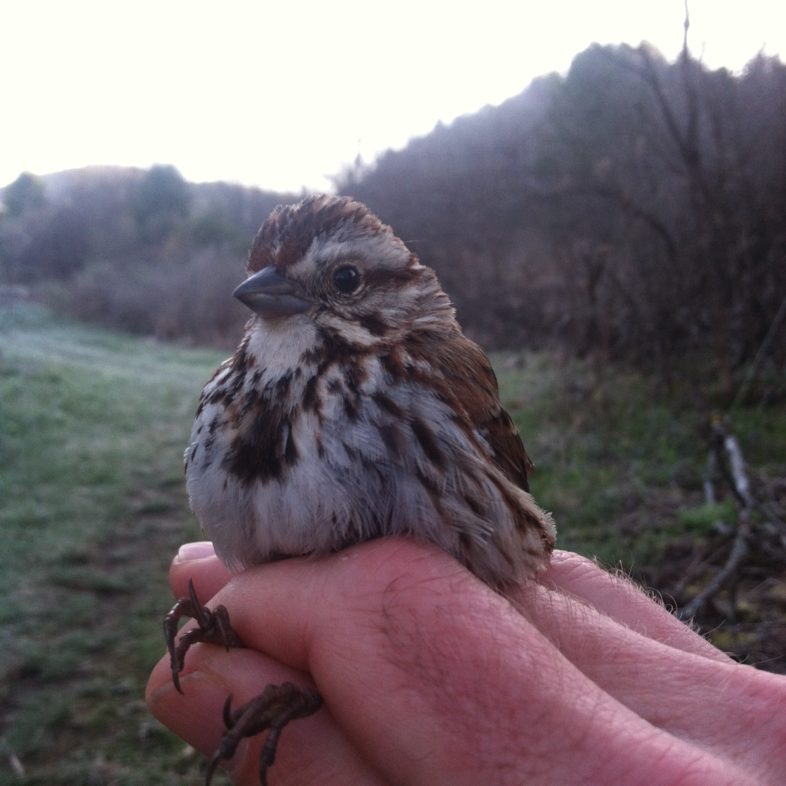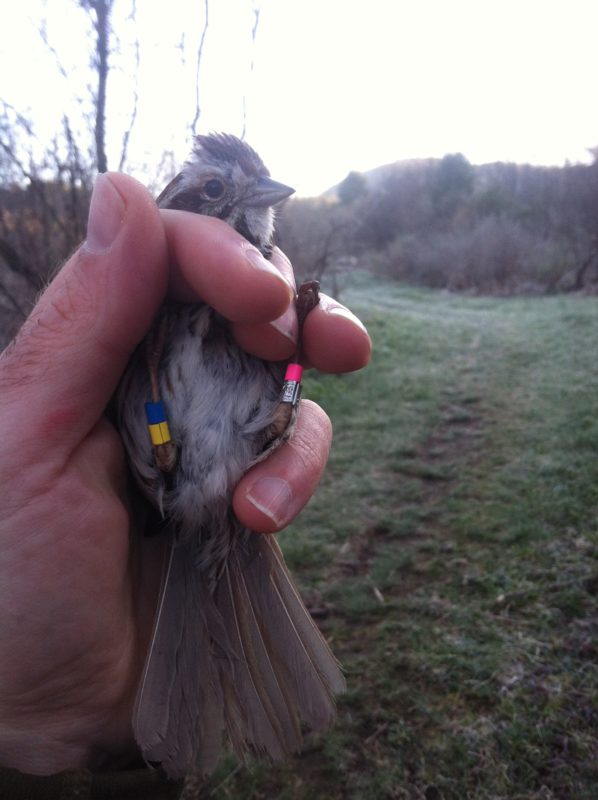As Jason Hill wrote about recently, the Vermont Center for Ecostudies has been preparing to launch a new citizen-science initiative asking birders to report sightings of color-banded Song Sparrows and Gray Catbirds. In collaboration with the North Branch Nature Center and the US Army Corps of Engineers, scientists from VCE and the North Branch Nature Center will be banding individuals of these two species at both the North Branch Nature Center in Montpelier and the Union Village Dam in Thetford. Observations of color-marked birds can yield valuable information about survival and population size, but the process of doing so – especially at large spatial scales – can be prohibitively time-consuming for a small team of researchers. What if we could leverage the collective effort and expertise of the birding community to crowd-source the problem? With many sharp-eyed birders scanning for marked birds each day, we might be able to carry out important demographic research more intensively and at larger scales than otherwise possible. That’s what this summer’s project is designed to test.
I’m happy to say that several Song Sparrows have been successfully marked and released at Union Village Dam. As of May 10th, 5 Song Sparrows are now wearing unique combinations of colored leg bands. All of these birds were captured near the beginning of the Mystery Trail in the vicinity of the large wetland (right about here). The Mystery Trail begins on the west side of Buzzell Bridge Road, about 1 mile from the Thetford Center/Route 113 entrance to Union Village Dam Recreation Area.

A male Song Sparrow (Melospiza melodia) captured and color-banded at Union Village Dam Recreation Area, Thetford, Vermont.
We will continue to band Song Sparrows over the next 2 weeks, and we’ll also start marking Gray Catbirds now that they have returned and are establishing territories. Even as we continue the banding effort, we hope that citizen scientists will take the opportunity to report any color-banded Song Sparrows or Gray Catbirds that they see at either of our sites. For those participating in this project, you can read more about collecting and submitting your data, and learn how to read and report color-banded birds. The bird pictured below, for example, is wearing Yellow over Blue on its right leg (it’s legs are held upside-down in the picture) and aluminum over Pink on its left. You might not see all of the bands when the bird is perched, but even a partial view can help us identify which individual you observed.

A male Song Sparrow (Melospiza melodia) with a numbered aluminum leg band and a unique combination of three colored bands: Yellow over Blue on the right, and aluminum over Pink on the left.
Stay tuned for further updates on the banding effort. In the meantime, let us know if you catch a glimpse of any of the marked individuals!

I saw a sparrow with a green band . We live in Bayside New York. Im trying to find out where he came from.